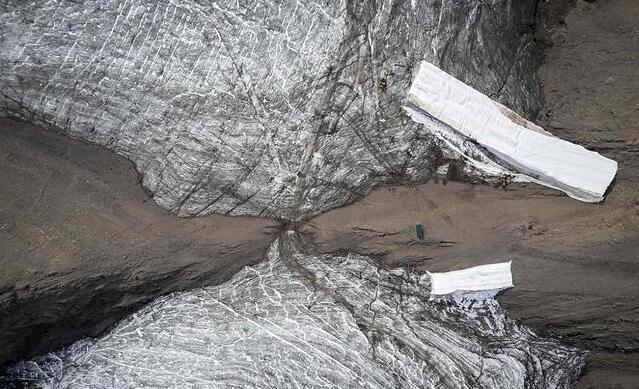The world’s glaciers are shrinking and disappearing faster than scientists imagined. If the current climate change trend is used to predict, nearly 83% of the world’s glaciers will disappear by the end of this century. The study also noted that most of the small, well-known glaciers are disappearing.
The study looked at 215,000 land-based glaciers around the world, though those in Greenland and Antarctica were not included. In the study, scientists used computer simulations to predict how quickly glaciers would disappear and how it would affect sea level rise by controlling for the amount of warming.
According to the study, according to the current global warming trend, the world is expected to lose 38.7 trillion tons to 64.4 trillion tons of ice by 2100.
The lead author of the article, Professor David Rounce of Carnegie Mellon University in the United States, mentioned that the disappearance of these glaciers will raise the global sea level by 11.43 centimeters. Regine Hock, a glaciologist at the University of Alaska Fairbanks and the University of Oslo in Norway, said that for many small glaciers, it is too late to take remedial measures. But for glaciers on a global scale, we need to control the rate of global warming, and every process of global warming is very important.
Climate Central chief executive and scientist Ben Strauss said a rise of 11.43 centimeters would mean more than 10 million people worldwide would live below sea level.
According to the Associated Press, some scientists say that future sea level rise will be caused more by melting ice caps than melting glaciers. At the same time, the disappearance of glaciers does not simply mean rising sea levels. It will also cause insufficient water supply for most of the world’s population and increase the risk of flooding.
“In places like the Alps or Iceland, the glacial landscape is what makes those places famous, and when they lose their ice,” said Mark Serreze, director of the National Snow and Ice Data Center (NSIDC). At that time, they also lost their souls.”
in Environment
Nearly two-thirds of the world’s glaciers are expected to disappear by 2100
Nearly 83% of the world’s glaciers could disappear by 2100 as climate change intensifies.




GIPHY App Key not set. Please check settings